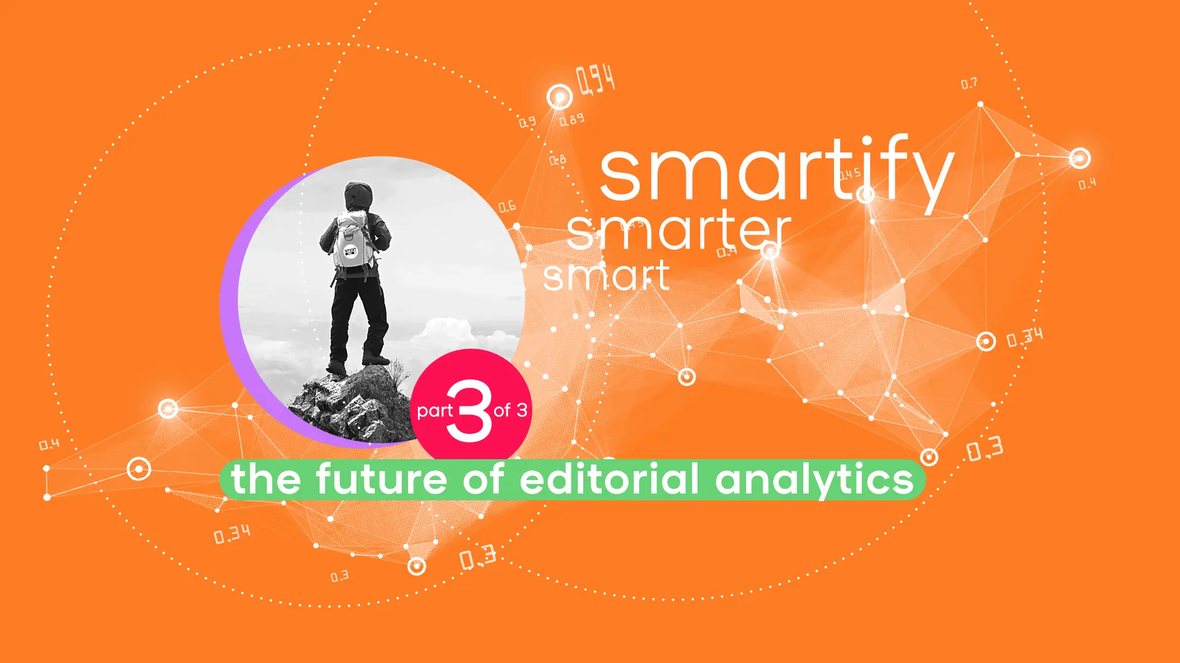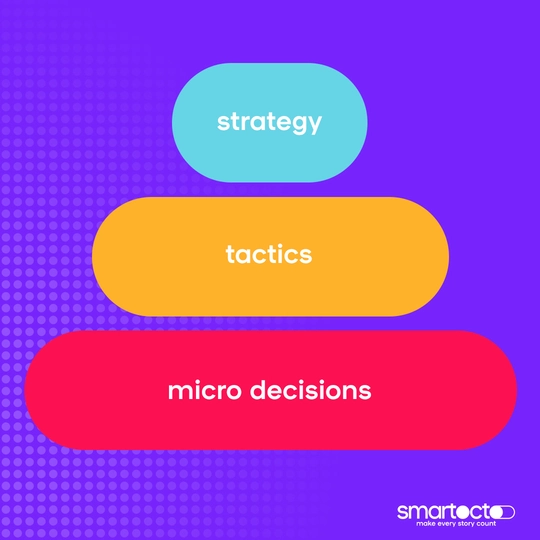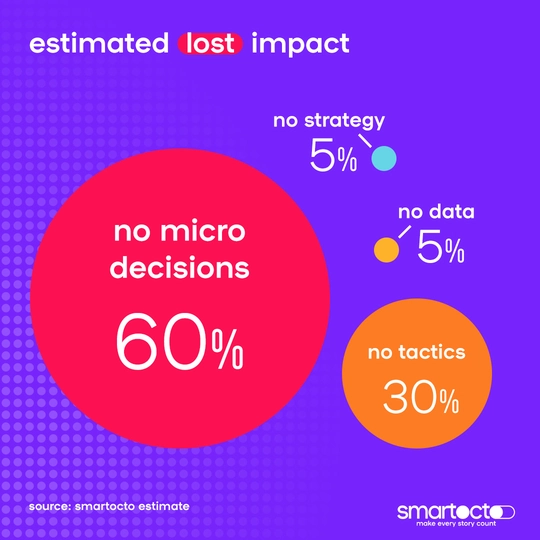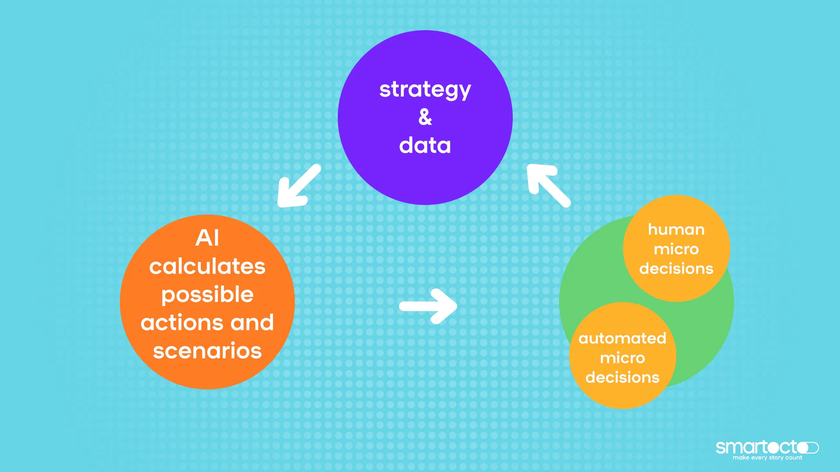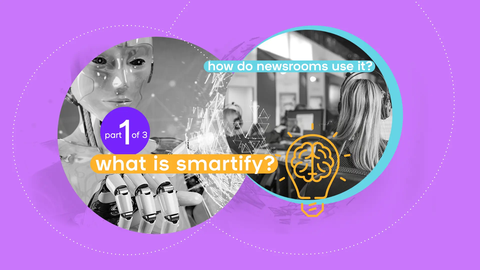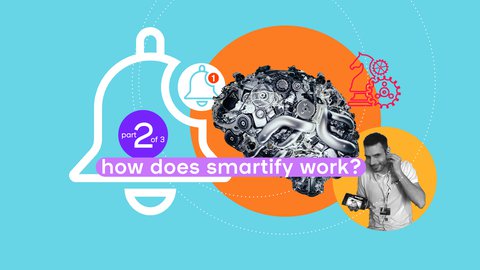AI and the calculation of possible micro-decisions
If we follow this train of thought, the necessary innovation in editorial analytics becomes apparent: the task of quickly translating complex data sets into possible micro-decisions should be done by AI and machine learning. If they are ranked by predicted impact, humans can cooperate with the robot to make the best decision in a very efficient process.
Today's AI is not only capable of recognising the patterns, but also to predict the effects of the editorial action and to order the possible actions accordingly. If the company’s strategy is accurately translated in flexible and transparent algorithms, and the content strategists have total control over the settings, the AI can even assist in executing the most uncontroversial and simple tasks. But humans should always be in the loop.
The culture shift that newsrooms and content producers need to make is profound. It is not about the technology or data, it is all about reframing the basics. If we define the strategy of a media company to be the primary set of business rules and goals, tactics should be the translation of strategy into algorithms that apply to specific use cases to calculate scenarios and actions.
We have been doing that for years and we can tell you that the gains are great but this is not that easy. In coding and setting the algorithms you cannot escape everyday problems that were there to begin with, but until now we had the luxury - or audacity - to ignore.
For example, there is the ripple effect, that every action changes the future. If we A/B test a headline of an article on the homepage, it will influence the click-through rate of the headline next to it. If you factor in that impact, evaluation becomes less straightforward.
There is the fact that there will always be spatial scarcity issues, you can post only so much to Facebook, and articles cannot all benefit from distribution to primary spots. There need to be priorities, combined microdecisions. There will always be featured authors and topics and it will add bias to the impact data.
